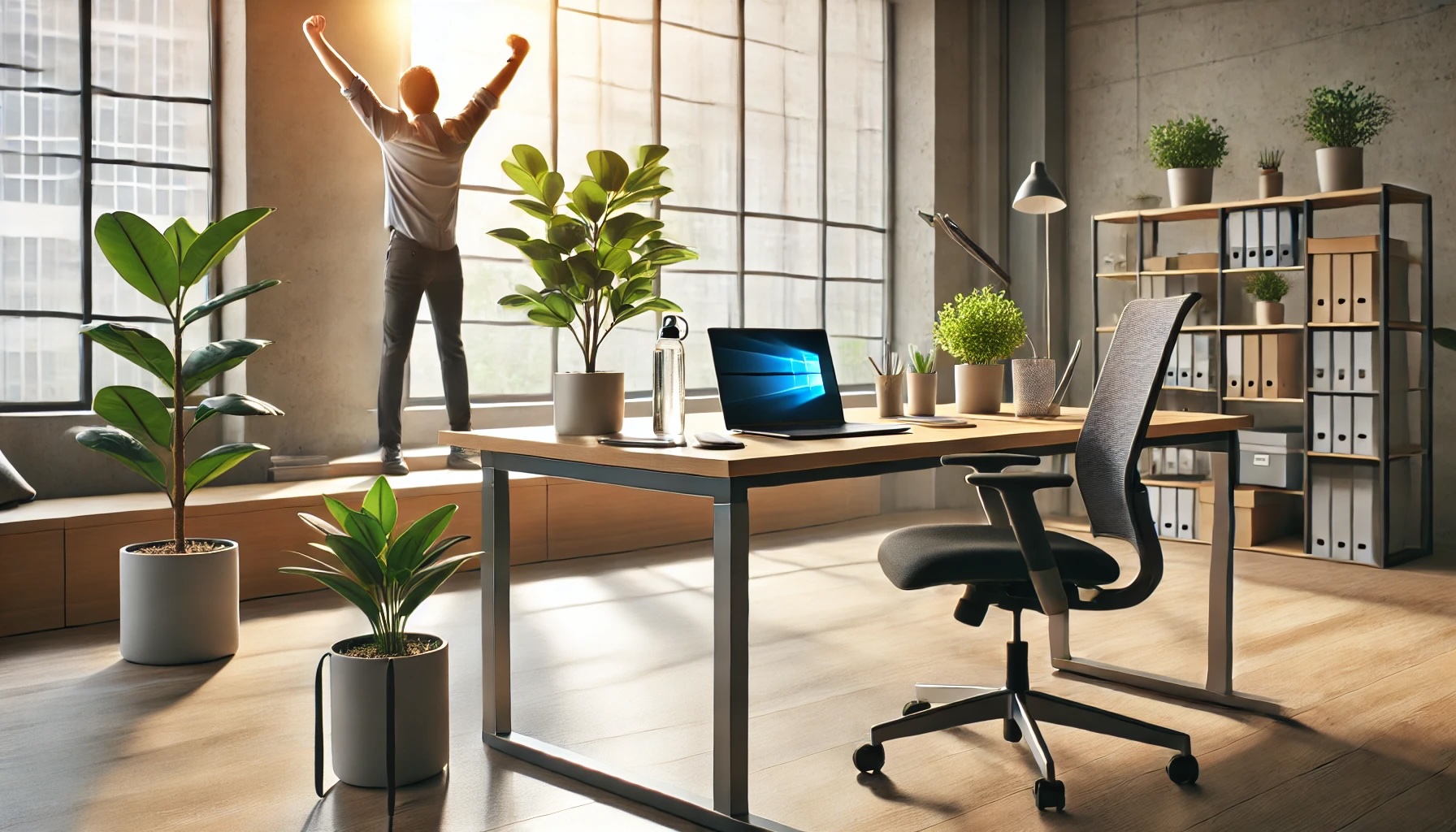Introduction: The Hidden Dangers of Prolonged Sitting
With modern work styles, prolonged sitting has become an unavoidable habit for many. Research shows that prolonged sitting not only leads to physical health issues but also negatively impacts mental well-being. It is closely linked to obesity, neck pain, cardiovascular diseases, and even diabetes, with severe cases potentially leading to premature death. To promote longevity and health, we need proactive measures to mitigate the risks of prolonged sitting. This article delves into comprehensive and practical health tips to help you reduce the harmful effects of sitting, allowing you to maintain a healthy lifestyle even in the office.
1. The Health Risks of Prolonged Sitting: A Danger Not to Be Ignored
1.1 The Multi-Faceted Impact of Prolonged Sitting on the Body
Prolonged sitting affects the body in many ways:
• Cardiovascular System: Sitting for long periods slows blood flow, increasing the risk of blood clots. It is also associated with high blood pressure and elevated cholesterol levels.
• Metabolic System: Prolonged sitting reduces the metabolic rate, lowers fat burning, and contributes to obesity and metabolic disorders.
• Musculoskeletal System: It causes muscle stiffness and weakness, especially in the lower back, neck, and shoulders.
• Digestive System: Sitting for extended periods compresses the gastrointestinal tract, leading to indigestion and constipation.
• Mental Health: Prolonged sitting is also linked to a higher risk of depression and anxiety.
1.2 The “Cumulative Toxicity” of Prolonged Sitting
Studies suggest that the risks of prolonged sitting are not only about the total hours spent sitting each day but also the duration of uninterrupted sitting. Even regular exercise cannot completely offset the adverse effects of sitting for extended periods. Additional measures are required to disperse the harm caused by sitting.
2. Effective Office Health Tips to Combat Prolonged Sitting
2.1 Incorporating Regular Movement into Your Routine
Regular movement significantly reduces the risks associated with prolonged sitting:
• Set Timed Reminders: Use your phone, smartwatch, or office software to remind yourself to stand up and move every 30 minutes.
• Standing Workstations: Complete tasks like reading emails or taking calls while standing.
• Take Advantage of Small Opportunities: For instance, walk during phone calls or conduct walking meetings.
• Choose Stairs Over Elevators: Opt for stairs whenever possible.
2.2 Simple and Practical Office Stretching Exercises
Even in an office setting, small movements can alleviate stiffness:
• Neck Stretches: Gently tilt your head to one side and hold for 15 seconds, then switch sides to relieve neck tension.
• Shoulder Rolls: Roll both shoulders forward and backward 10 times each to loosen the shoulder and neck muscles.
• Seated Twists: While seated, twist your torso to one side and grab the back of the chair for support, holding for 10 seconds.
• Leg Stretches: Extend one leg while seated, hold for 10 seconds, then switch to the other leg.
2.3 Optimizing Ergonomic Office Furniture
• Standing Desks: Alternate between standing and sitting to avoid prolonged static posture.
• Ergonomic Chairs: Adjust the height to ensure proper lumbar support and maintain correct posture.
• External Keyboard and Mouse: Prevent excessive forward leaning or wrist discomfort.
2.4 Micro-Movements at Your Desk
Small exercises can make a big difference even while seated:
• Toe Lifts: Raise your heels while keeping your toes on the ground, hold for a few seconds, and lower slowly. Repeat 15 times.
• Core Contractions: Tighten your abdominal muscles, hold for 5 seconds, and relax. Repeat 10 times to strengthen your core.
• Fist Clenches: Clench your fists and then open them forcefully. Repeat 15 times to alleviate hand fatigue.
3. Healthy Eating Strategies: Fueling Your Body Right
3.1 Choose Nutritious Snacks
• High-Fiber Snacks: Opt for oatmeal bars, whole-grain crackers, or veggie sticks.
• Healthy Fats: Incorporate nuts and avocados into your snack options.
• Avoid Junk Food: Steer clear of chips, candies, and sugary drinks.
3.2 Stay Hydrated
• Keep a water bottle on your desk to remind yourself to drink water regularly.
• Add lemon slices, mint leaves, or fruit infusions for a refreshing twist and to encourage more water intake.
3.3 Optimize Lunch Choices
• Bring Your Own Lunch: Control the amount of oil and salt, and choose healthy cooking methods such as steaming or boiling.
• Balance Your Diet: Ensure a mix of proteins, fiber, and carbohydrates for a balanced meal.
4. Managing Mental Health: Alleviating Stress and Boosting Focus
4.1 Quick Stress Relief Techniques
• Meditation: Take 5 minutes during your lunch or afternoon break to meditate and relieve mental stress.
• Deep Breathing: Inhale for 4 seconds, hold for 4 seconds, and exhale for 4 seconds. Repeat several times to calm your emotions.
• Close Your Eyes: Close your eyes and slowly rotate your eyeballs to relax your eye muscles and mind.
4.2 Small Habits for Increased Happiness
• Desk Plants: Choose low-maintenance plants like succulents or small potted greens to brighten your workspace.
• Personalize Your Workspace: Add family photos, motivational quotes, or small trinkets to create a welcoming atmosphere.
5. Sustaining Long-Term Change: Building a Healthy Lifestyle
5.1 Set Clear Health Goals
• Gradually increase your daily step count, such as walking an extra 1,000 steps per day.
• Experiment with a new healthy recipe each month to diversify your diet.
5.2 Track and Reflect on Progress
• Use fitness apps or smart devices to monitor your activity levels and record changes in diet and weight.
• Review your records weekly to assess which habits need more attention or adjustments.
5.3 Seek Social Support
• Join workplace wellness groups or clubs to participate in activities like walking or jogging with colleagues.
• Share health achievements and encourage one another to stay motivated and accountable.
Conclusion: Start Now to Embrace a Healthier Work Life
Prolonged sitting may be a modern work necessity, but through mindful adjustments and healthier habits, we can significantly reduce its health risks. From regular movement to optimized diets, from ergonomic furniture to mental health management, every step forward leads to a healthier body and mind. Don’t wait—start implementing these office health tips today and invest in your future well-being!




















